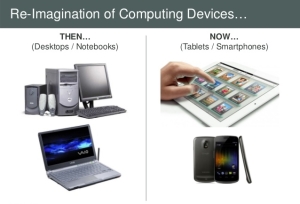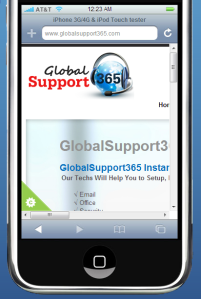This sector has been so developed the past years that current mobiles don’t do anything to do with the ones before

Left image, Alcatel One Touch Easy and right image, an iPhone 5
It’s not a long time since we got our first mobile phone proudly and enthusiastically. Tough materials with aerial, small screen and big keyboard which we still keep them like an antique and we are unwilling to get rid of them.
In 1982, Nokia commercialized «Senator», the first mobile phone technology, and that’s why it began to get an unstoppable success worldwide. Actually, Motorola was the first company in putting onto the market the mobile named The grandfather , motorola DynaTAC, with a 800 grs weight and 33 cm length. At that time this innovation became to cost 3995 $ stunningly.

Motorola DynaTAC
That technological revolution which started almost 30 years ago hasn’t slowed down even a little bit. Lots of brands joined phone mobile technology and put onto the market a diverse variety of products:Alcatel, Motorola, Nokia, Philips, Toshiba, Ericsson, Sagem, Sanyo, Panasonic… We couldn’t expect anything about Apple or HTC and neither about the day that the mobile phone would offer more services apart from the conventional ones (calling, texting or playing games).
Most of the brands that came out from this new concept of mobile phone market disappeared and few of them are still on the market. In fact, Nokia, is the best example to describe how to manage the technological process in a wrong way and carrying out an unsuitable company politic.
Nokia is struggling to be successful once again but is behind brands such as iPhone, HTC or Samsung by far.
On the other hand, Samsung, has found the formula to be one of the sector leaders currently, standing by Apple.
Surely you will remember many mobiles from those times. We will show you some of the most successful ones:
-Nokia 3310: Launched in 2000, this model became one of the most popular ones. more than 100 millions units were sold in the whole world. It had calculator, colourful cases, stopwatch and a classic game, “Snake”
– Alcatel One Touch Easy: It was displayed in 1997 and it was bought by loads of young people. It was a big mobile phone but attractive because of its colourful appearance and offered the possibility of adding extra battery.
– Ericsson T10, T20…. : Sophisticated and enjoyable at the same time. It was one of the most supported by the adults. From the serious grey to the eyecatching pink one. Its tiny aerial and the lid to protect the keyboard made it successful from the first day.
– Nokia 3300: Launched in 2003, it was designed for technology lovers. It offered 2G, colour scree, FM radio and MP3.
– Nec: The Japanese company was quite popular from the beginning but after some years its sales would decrease.
– Motorola: V3 was one of the biggest hits of this company. Extremely flat and with a really eyecatching design, it’s easy to be seen in the street because not everyone has an smartphone.
– Ericsson GA28: This Sweedish company created this mobile which was preferred by lots of customers e and it was easy to be recognised because of its removable buttons set.
– Nokia 6110: it was one of the best mobiles of the Finnish company, similar to 5100. Between the new features we could find the popular videogame “Snake”, infra red device and new gadgets on the screen.
– Alcatel 808: This company modernised and launched the model 808, really modern, functional and adventurous.
What can we do with our old phones?
Mobile components are Up to 90% recyclable. So, it’s really important having the habit of recycling like another kind of waste (tins, packages…)
Mobiles, chargers and accesorises go through a sorting, shredding and classifying and extruding process, so that we can obtain plastics, aluminium, copper and fibre glass.
www.globalsupport365.com
 The richer presentation about internet trends has just been published by Mary Meeker and is waiting to be read very carefully. Includes an update on the number of Internet users, desktop and mobile in major countries the rate of adoption of smartphone and tablet platform.
The richer presentation about internet trends has just been published by Mary Meeker and is waiting to be read very carefully. Includes an update on the number of Internet users, desktop and mobile in major countries the rate of adoption of smartphone and tablet platform.




























